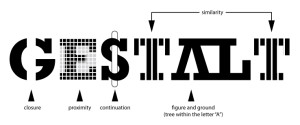In cognitive psychology, there are many concepts we learn that are related to our everyday lives. These concepts include the way our brain transmits signals, the way we perceive, and the ways in which we behave. Like most concepts in psychology, there is always some dispute about what actually is causing us to think the way we do. To me, the most interesting concept in cognitive psychology is the theory of behaviorism.
John Watson first introduced the idea of behaviorism. He did not agree with analytic introspection, which was “a technique in which trained participants described their experiences and thought processes in response to a stimulus” (p. 8-9). “Watson’s goal was to eliminate the mind as a topic of study in psychology and replace it with the study of directly observable behavior” (p. 10). Behaviorism is the theory that human behavior can be explained in terms of conditioning (Google). With this definition came a term called classical conditioning, which involves pairing one stimulus with another neutral stimulus in order to change the response to the neutral stimulus (p. 10).
After introducing the term classical conditioning, a Harvard graduate student named B.F. Skinner introduced a new type of conditioning. Skinner called his idea operant conditioning, which is showing how behavior is influenced by positive or negative reinforcement.
The concept of behaviorism, in regards to classical and operant conditioning, has many aspects that are shown in everyday life or certain life experiences. For example, with classical conditioning, I can think of a person with post-traumatic stress disorder. In a war the person has been conditioned with guns and loud noises. Every time they would see a gun, a loud bang would follow and they would take cover. Eventually they are conditioned to a point where every time they see a gun, the person would take cover even without the loud bang. Operant conditioning is a bit more common in our lives. Operant conditioning can happen at school, work, a restaurant or clothing store. The point is that in all of these situations there are chances for both positive and negative reinforcement. For example, a worker who comes to work everyday on time will get a raise. Receiving the raise will positively reinforce the action of coming to work on time. If a worker were to get money taken out of his/her check for being on time, then it would negatively reinforce the worker to be late.
In conclusion, the theory of behaviorism seems to be a logical approach to the way in which humans respond to a certain stimulus. There are many examples for conditioning and can be a good way to prove how outside stimuli has an effect on human behavior.
Works Cited
Goldstein, E. Bruce (2011). Cognitive Psychology: Connecting Mind, Research, and Everyday Experience [Kindle Version]. Retrieved from Amazon.com
Behaviorism. (n.d.). https://www.google.com/webhp?sourceid=chrome-instant&ion=1&espv=2&ie=UTF-8#q=behaviorism%20definition





